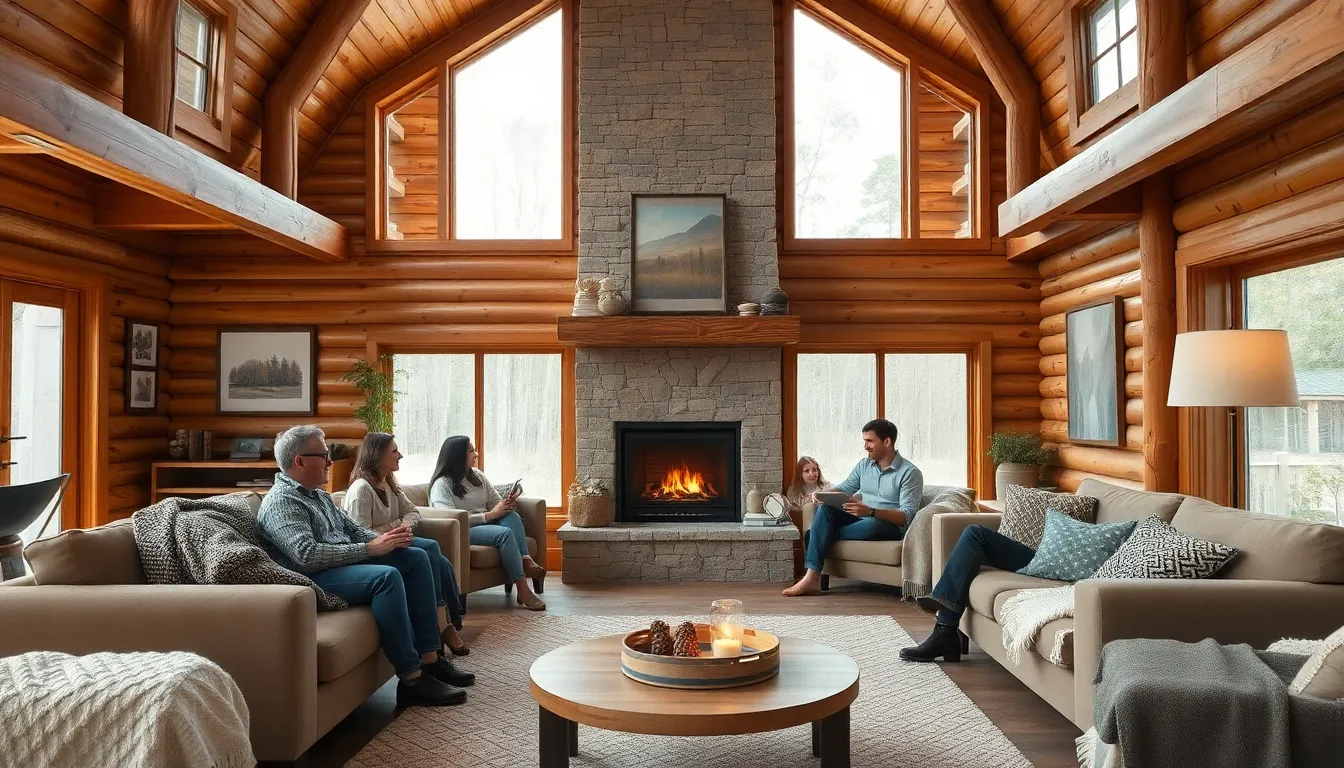Imagine stepping into a cozy cabin, where the warmth of the wood and the inviting scent of pine make you feel instantly at home. Cabin interiors are not just about aesthetics: they serve as the heart and soul of any retreat, steeped in character and comfort. In an era where we often rush from one thing to the next, a beautifully designed cabin offers a sanctuary that makes you want to linger, and maybe even flip through a good book while sipping hot cocoa. So, what elements contribute to that perfect cabin vibe? Let’s jump into the world of cabin interiors and explore how they enhance the overall experience.
Table of Contents
ToggleImportance of Cabin Interiors in the Overall Experience

Cabin interiors play a pivotal role in defining the ambiance and overall experience of a getaway. Friends and families flock to these retreats not just for the scenic views but for the memories made inside warm, inviting walls. The interior sets the stage: it’s where laughter is shared, stories are told, and relaxation is achieved.
Consider how the layout influences social interactions. Open spaces can help gatherings, while nooks provide cozy corners for solitude or intimate chats. Also, the aesthetics, colors, textures, and materials, invoke specific emotions. A cabin that feels warm and inviting encourages visitors to unwind after a day of adventure, allowing them to truly savor their escape from reality.
Elements of Cabin Design
Design elements of a cabin interior can vary widely, but some key components remain consistent.
Color Schemes
Firstly, color plays a crucial role. Earthy tones like browns, greens, and grays typically dominate to echo the natural surroundings. Accent hues, such as deep reds or soft blues, can bring warmth and charm to otherwise neutral palettes.
Furniture Choices
Comfortable yet stylish furniture is another essential facet. Think plush sofas and well-placed armchairs, pieces that not only look good but also beckon you to sink in and relax.
Lighting
Lighting, too, can’t be overlooked. Pendant lights, strategically placed lamps, and natural light streaming through large windows all collaborate to create an inviting atmosphere. Soft, warm light aids relaxation, casting a glow that makes evenings in the cabin feel magical.
Decor
Finally, decor elements, such as artwork and personal touches, add character. Many homeowners incorporate local artwork or vintage finds that tell a story, infusing the cabin with personality that resonates with its surroundings.
Materials Used in Cabin Interiors
Selecting the right materials is a game-changer in cabin interiors. Not only do materials contribute to the aesthetic, but they also enhance durability and comfort.
Wood
Wood remains the undisputed champion, often serving as the primary material for floors, walls, and ceilings. Varieties like cedar, pine, and oak bring warmth and a natural feel. Their rich textures and colors create an inviting ambiance.
Stone
In combination with wood, stone accents can add a rugged element to the design. Whether it’s a stone fireplace or a feature wall, stone contrasts beautifully with wood, adding depth and character.
Fabrics
Fabrics also play a significant role. Using natural fibers like wool, cotton, and linen not only feels good but also complements the rustic charm of cabins. These fabrics can be used for upholstery, curtains, and soft furnishings, enhancing comfort while adding visual interest.
Glass
Finally, incorporating glass elements can enhance the feeling of spaciousness. Large windows not only frame beautiful views but also flood the space with natural light, creating an atmosphere that’s both open and cozy.
Trends in Cabin Interior Design
Cabin interior design is evolving, blending traditional influences with modern trends. Here are a few notable styles on the rise:
Minimalist Cabin Design
Minimalism is gaining traction, where less truly becomes more. Clean lines, uncluttered spaces, and simple decor make for a serene environment that allows the surrounding nature to take center stage.
Sustainable Materials
Eco-friendly materials are also trending. Homeowners are looking for sustainable options, such as reclaimed wood or energy-efficient appliances, to lessen their impact on the environment while keeping their cabins stylish.
Open-Concept Living
Open-concept designs have found their way into cabins, fostering a sense of community. These layouts promote interaction by connecting the living space, dining area, and kitchen, keeping everyone together while enjoying the cabin life.
Vintage Meets Modern
A mash-up of vintage charm and contemporary design has emerged, think retro accents like mid-century furniture paired with sleek, modern fixtures. This combination creates an eclectic and inviting atmosphere rich in character.
Practical Tips for Designing Cabin Interiors
Ready to create your own perfect cabin interior? Here are some practical tips to consider:
Start with a Vision
Begin by skimming through mood boards and magazines. Envision the atmosphere you want to create. Do you prefer rustic charm or modern elegance? Having a clear vision can save time and energy.
Incorporate Local Elements
Use local materials and artisans to bring authenticity to your cabin. This not only supports the community but also helps your interior reflect the unique character of the area.
Focus on Functionality
Design with function in mind. Each piece of furniture should serve a purpose while contributing to the comfort of your space. Opt for multi-functional furniture that makes the most of limited space.
Personalize Your Space
Finally, don’t shy away from personal touches. Incorporate family heirlooms, photographs, or artworks that resonate with you. These items make the cabin feel uniquely yours and encourage storytelling among guests.


